The entire Military of North Mississippi uses a unified system of rank insignia, regardless of their official branch or specialization. Navy and Inspecorate, District Troops to elite commandos, all wear the same. Much of this stems from King Xavier’s own preferences, which developed during his time as a Prince of the Mississippi Empire.
Commissioned Officer Ranks
Commissioned Officers in North Mississippi have the full rights and responsibilities of their ranks. Most of them come from foreign military academies, learning their trade in established schools. Efforts to create a local military academy have not born fruit, although the apprenticeship program practiced by some branches has merit.
Almost all commissioned officers in the Royal Military follow the army ranks. Naval ranks are harder to get, as the requirements are more stringent. naval ranks also preclude service in the Field Army, District Troops, King’s Army or North Watch.
All non-flag ranks wear their insignia on their collars. Flag-ranks (generals and admirals) wear shoulder boards.
Second Lieutenant / Ensign
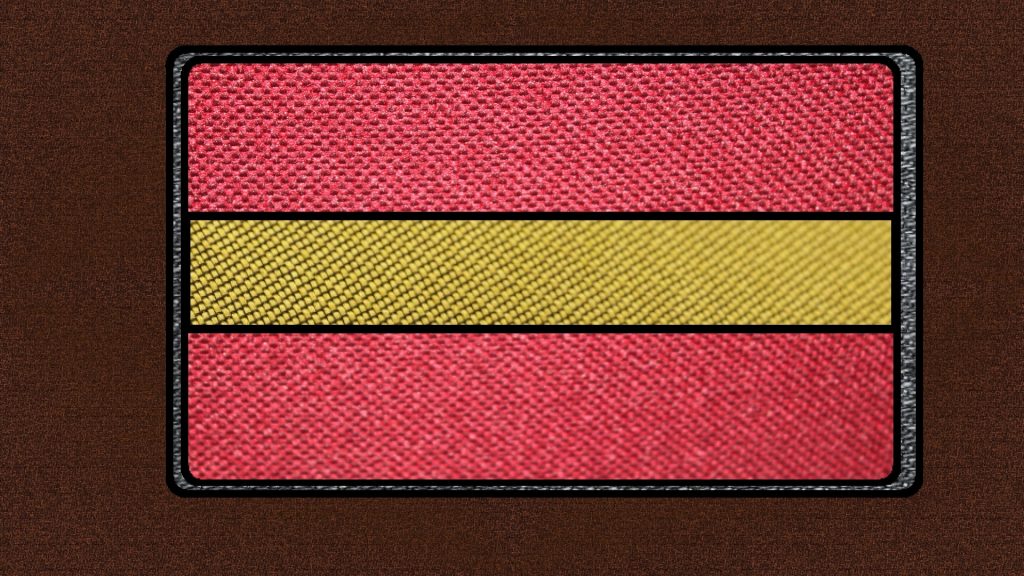
Junior-most officer in any branch, Second Lieutenants are still learning their ropes. Often paired with a senior officer or experienced non-commissioned officer to learn their duties.
First Lieutenant / Lieutenant, Junior Grade
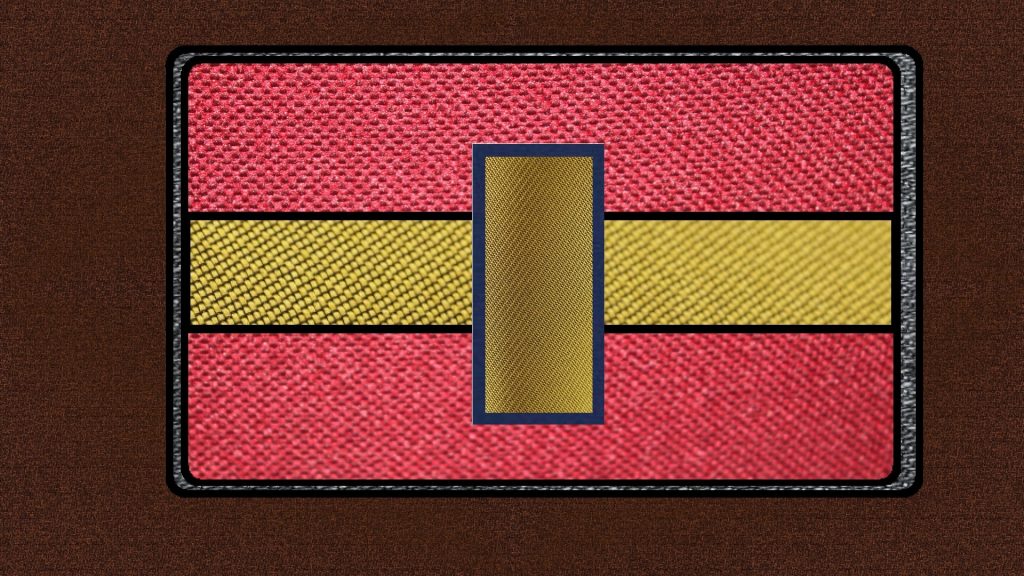
The second level of officer has gained enough experience to need less guidance and supervision.
Captain / Lieutenant, Senior Grade
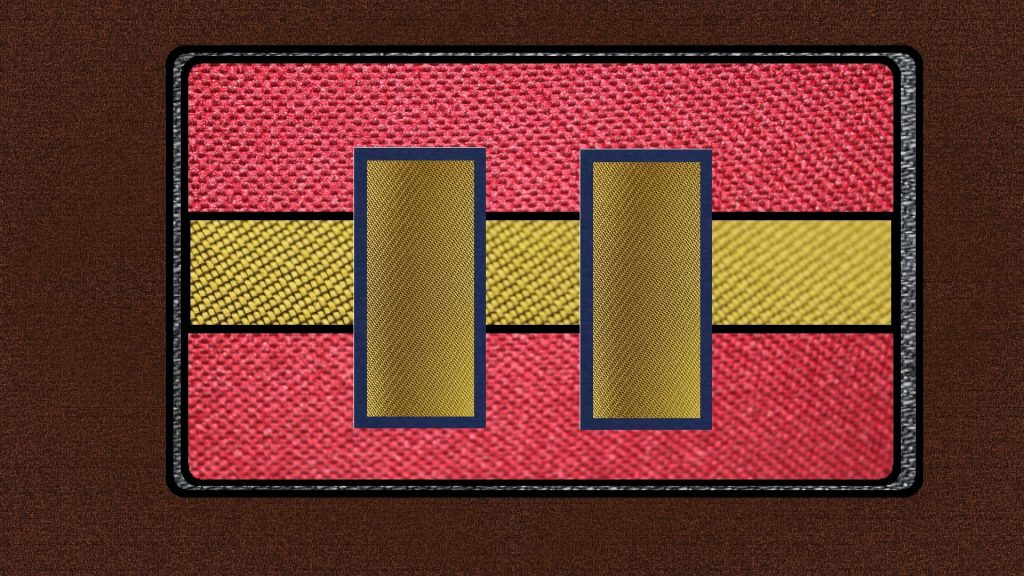
Major / Lieutenant Commander
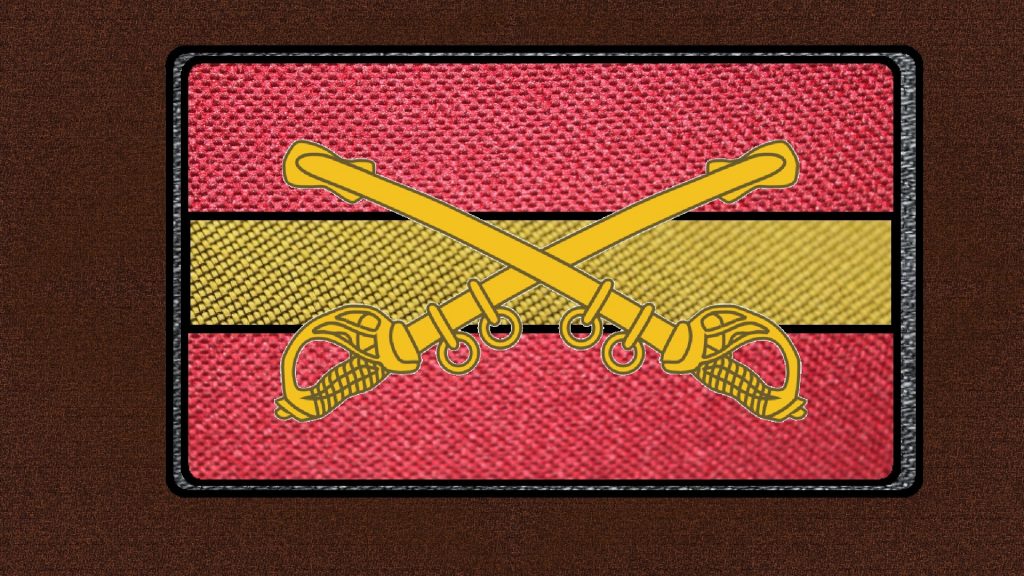
Lieutenant Colonel / Commander
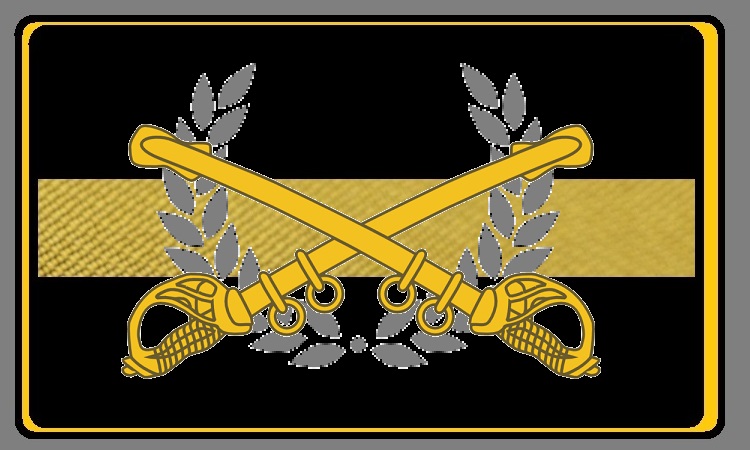
Most officers of this rank serve as executives and staff officers to superior officers, learning the skills needed to exercise command on their own. Some skilled individuals may be given commands of units and ships at this rank.
Colonel / Captain
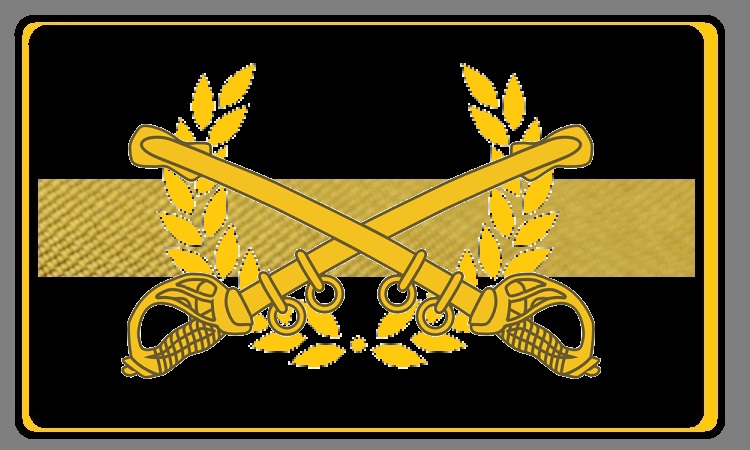
The highest non-flag rank, Colonels and Captains command the battalions of the army, the ships of the navy, and the important offices of the headquarters.
Brigadier General / Commodore
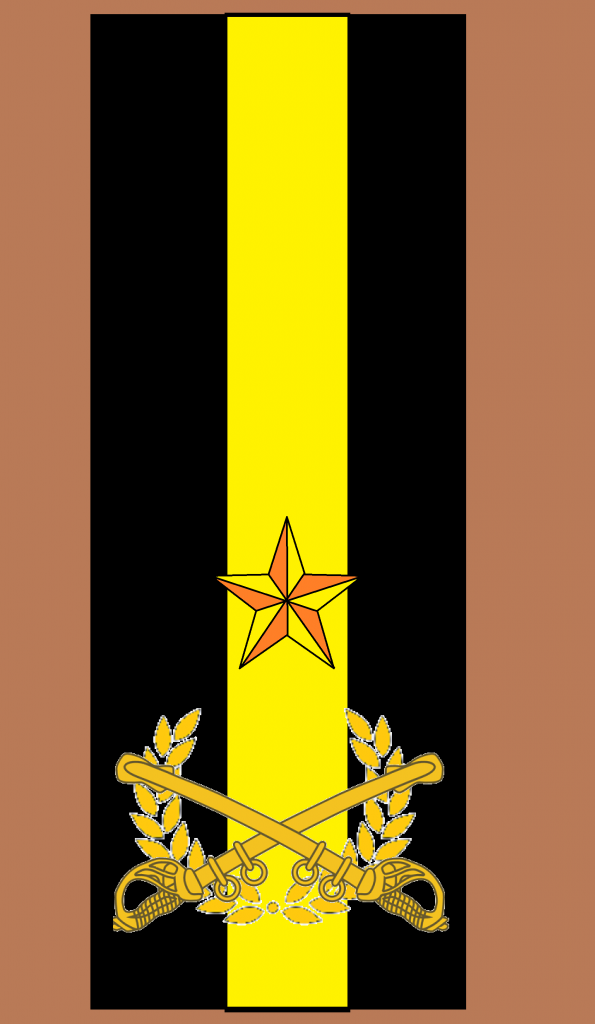
One-star officers command brigades and smaller districts, naval squadrons and important installations.
Major General / Rear Admiral
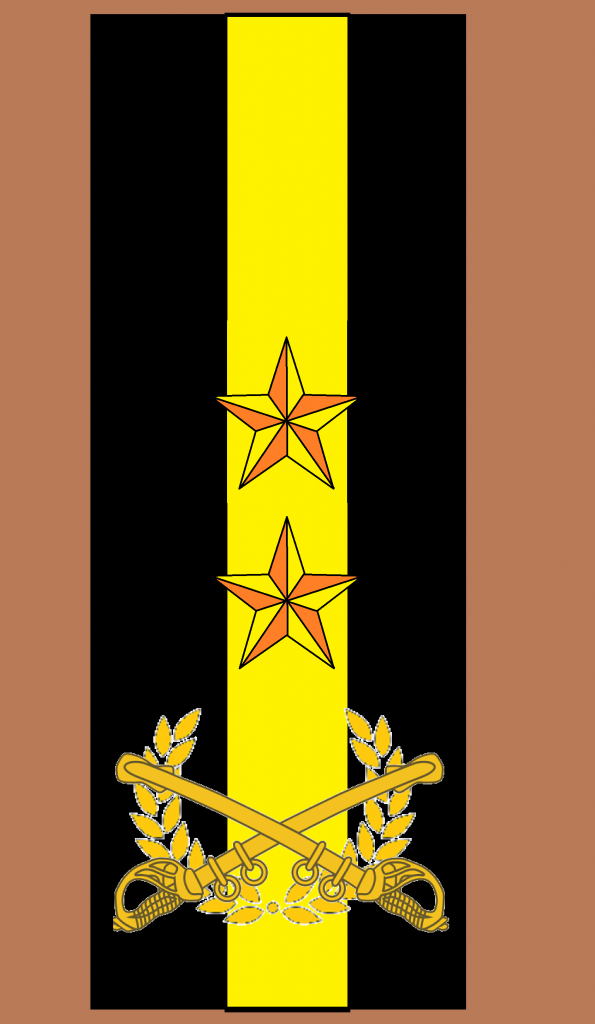
The highest rank in the military not directly limited by the Charter of North Mississippi, the two-star officer is the highest rank many officers will ever achieve.
These officers command corps and division headquarters, most of the district commands, and many of the subordinate branches and institutions of the military.
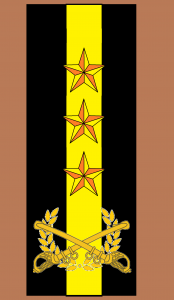
Lieutenant General / Vice Admiral
Under the Charter of North Mississippi, the kingdom is allowed twelve three-star officers. These officers command important portions of the military, including junior branches and subordinate commands. Promotion to these positions is at the selection of King Xavier with confirmation by the council of nobles. When an officer retires or died, the new three-star officer may not be his successor, but may pass to another important position.
Commander of the Lake Superior Fleet – Vice Admiral
Commander of the River Fleet – Vice Admiral
Administrator General – Lieutenant General
Field Army I Corps Commander – Lieutenant General Carlos Vega
Field Army II Corps Commander – Lieutenant General
Field Army Quartermaster – Lieutenant General Robert Coronado
Inspectorate, Director of Intelligence – Vice Admiral
Royal Cities District Commander – Lieutenant General
Omaha District Commander – Lieutenant General
North Watch Commander – Lieutenant General
Quartermaster, Inspector General of Fortresses – Lieutenant General
King’s Corps Commander – Lieutenant General
General / Admiral
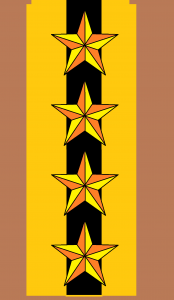
Under the Charter of North Mississippi, the military is allowed five four-star officers, who command important branches of the military. Each of these men has held their position since the creation of the kingdom some sixteen years ago. When one dies or retires, the four-star position may go to his successor, or may go to another important officer, as selected by the King and confirmed by the Council of Nobles.
Marshal of the Army – General Lord Herschel Robinson, Duke of Hennepin
Marshal Robinson, as he prefers to be called, is both the Marshal of the Army and the Minister of War. As Marshal of the Army, he commands all the branches of the military save for two: the Royal Navy, which is completely independent, and the Field Army, which gained nominal independence after the Range Riot. He owes his position to his old friend, King Xavier.
General of the Field Army – General Prince Stefan Santiago-Locke
The second son of King Xavier, General Prince Stefan commands the Field Army, the sixty-thousand man force that acts as the offensive and counter-offensive portion of the army. He has built the Field Army from scratch, choosing officers, equipment and training to make it a viable combat force for the Kingdom.
Quartermaster General – General Lord Ernesto Aguilar, Duke of Rochester
An officer who came up within the ranks of the Mississippi Empire, Aguilar has long avoided the political infighting of Robinson and Prince Stefan. He is responsible for the procurement of equipment, building fortresses, and maintaining the supply lines for all troops, regardless of their branch.
Inspector General – General Lord Harry Lavern, Earl of Mankato
Another friend of King Xavier, Harry Lavern is responsible for intelligence and counter-intelligence operations, security forces and high-value prisons. While he owes his position to his friendship, General Lavern has proven to be quite effective at his job, rumors of sadism and favoritism not withstanding.
Admiral of the Royal Navy – Admiral Lord Yuri Rokossovsky, Earl of Duluth
A transplant from the Imperial Commonwealth, Admiral Rokossovsky is a tough and fair admiral, who has built the Royal Navy up despite King Xavier’s dislike of boats. He is one of the most respected officers and noblemen in the entire kingdom.
Warrant Officer Ranks
In the Military of North Mississippi, Warrant Officers are technical specialists who exist outside the normal chain of command. These specialists are predominant in technically advanced areas, such as the pilots of the Air Corps, the technicians of the Royal Navy, and the tankers of the Armored Brigade. They draw significant pay for their expertise, but are limited in how high they can rise within the military.
Warrant Officer, Third Class
Warrant Officer, Second Class
Warrant Officer, First Class
Master Warrant Officer
Enlisted Ranks
Enlisted personnel make up the vast majority of the ranks. From soldiers to wagoneers, gunners to cooking staff, most personnel in the military have little or no authority.
| Army Rank | Navy Rank | Insignia |
| Private | Sailor’s Apprentice | |
| Private | Sailor | |
| Senior Rifle | Senior Sailor | |
| Corporal | Petty Officer, Third Class | |
| Sergeant, Third Class | Petty Officer, Second Class | |
| Sergeant, Second Class | Petty Officer, First Class | |
| Sergeant, First Class | Chief Petty Officer | |
| Master Sergeant | Senior Chief Petty Officer | |
| Sergeant Major | Master Chief Petty Officer |